Chimeric antigen receptor (CAR) T cells are immune cells that have been genetically engineered to bind specific proteins on cancer cells. CARs can display exquisite sensitivity and discrimination, and CAR T cells have been deployed with spectacular success to detect and kill blood cancers. Unfortunately, they are much less effective against “solid” tumors, such as breast or kidney cancers. To address this problem, Dr. Titus [Connie and Bob Lurie Fellow] is designing T cells with membrane proteins that perform novel functions, including proteins that facilitate membrane fusion or alter the adhesion between T cells and their targets. By redesigning T cell membranes, Dr. Titus hopes to create useful cancer-fighting tools that can be deployed in conjunction with other emerging cellular therapies and immunotherapies. Dr. Titus received his MD and PhD from the University of California, San Francisco, and his AB from Harvard University.
All Cancers
Current Projects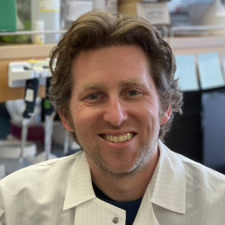
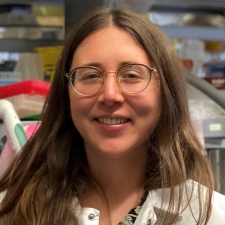
When an organism is developing, it must correct mistakes that might occur at the level of individual cells or tissues. Dr. Triandafillou [National Mah Jongg League Fellow] wants to better understand how error correction systems work, and why they might not work in cases like cancer. To explore these developmental questions, Dr. Triandafillou uses what are called gastruloids, 3D clusters of stem cells that can organize themselves and transform into the basic building blocks of an organism. She developed a method using microscopy to trace the history of these cells and measure how much their past state and history influence what they become. Dr. Triandafillou wants to see how differences in individual cells might impact what those cells eventually turn into, and how such differences affect the correction of mistakes like abnormal growth, bias in cell types, or missing cell types. She is also interested in how the cells around an error react to it. Dr. Triandafillou received her PhD from the University of Chicago and her BS from Temple University.
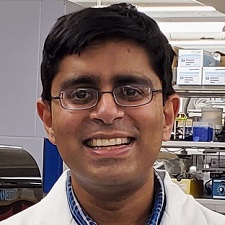
Epidemiologic studies have revealed that many cancer types display differences in incidence or outcomes between the sexes. In most cases, these differences are only partially explained by non-genetic factors such as hormonal differences, carcinogen exposure, lifestyle, and access to health care. Our understanding of how genetic factors contribute to differences in cancer incidence between the sexes remains incomplete. A fundamental genetic difference between the sexes is in chromosome composition. Relative to male somatic cells, female somatic cells have an extra X chromosome. Most genes on the second copy of chromosome X in females are inactivated via a process known as X-chromosome inactivation, which approximately equalizes the dosage of X-linked genes between males and females. Dr. Viswanathan's project tests the hypothesis that genetic alterations to the X chromosome in cancer may perturb this carefully regulated process and thereby contribute to differences in cancer incidence or pathogenic mechanisms between males and females.
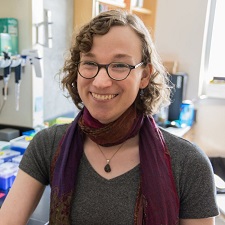
Dr. von Diezmann is a biophysicist who studies how cells regulate the pathway used to repair broken DNA. Errors in specific DNA repair pathways are an early step in the development of many cancers, such as with defects in homologous recombination for breast, ovarian, and pancreatic cancers. The Diezmann lab uses high-resolution microscopy techniques to visualize the process by which DNA breaks are designated for specific repair fates, working primarily in live meiotic nuclei of the model organism C. elegans. By elucidating the mechanisms by which protein assemblies form and transmit information along chromosomes and throughout the nucleus, her lab will help provide a foundation for the development of novel chemotherapies based on modulating the DNA damage response.

Cancer immunotherapy has revolutionized the way we treat cancer; however, it is only successful in a small subset of patients. Optimally functioning CD8 T cells, the specialized killers of the immune system, are key to the success of cancer immunotherapies. While CD8 T cell function is highly influenced by their metabolism, little is understood about how metabolism changes the function of these cells. Dr. Watson hypothesizes that metabolism affects CD8 T cell function by altering how tightly its DNA is packaged (its epigenetics), leading to altered gene expression. Using a mouse model of adoptive T cell therapy, a widely used immunotherapy in humans, and epigenetic techniques, Dr. Watson proposes to uncover how metabolism influences CD8 T cell epigenetic landscapes to control their function. He plans to apply these findings to improve T cell function and enhance tumor clearance. Dr. Watson received his PhD from the University of Pittsburgh, Pittsburgh and his BS from Hope College, Holland, Michigan.

Neuroblastoma is a rare pediatric cancer that typically arises in the adrenal glands, located above the kidney. Children with high-risk neuroblastoma often have poor prognoses despite intense treatment-including maintenance treatment with retinoic acid-underscoring the need for new treatments to improve long-term outcomes. Retinoic acid, which is orally available and generally well tolerated, helps neuroblastoma cells mature (differentiate) into normal cells; however, this process is entirely reversible once the retinoic acid is withdrawn. If this differentiating effect could be made permanent with the addition of a second drug, a combination treatment with retinoic acid could become a novel method of preventing patient relapse. After testing a panel of 452 small molecule drugs, Dr. Weichert-Leahey discovered that a drug called PF-9363 accentuated the effects of retinoic acid in neuroblastoma the most. She will now study how PF-9363 functions, alone and together with retinoic acid, both in cells and patient-derived neuroblastoma models in mice. These experiments will indicate whether combinations of this new compound with retinoic acid may improve outcomes for children with high-risk neuroblastoma.
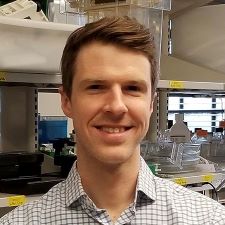
Dr. Woida studies the foodborne pathogens Listeria monocytogenes and Shigella flexneri that enter and replicate within human cells. These bacteria also directly infect neighboring cells by pushing against the host cell membrane to form long membrane protrusions that extend and eventually release the bacteria into the new cell. This process of cell-to-cell spread requires the bacteria to hijack intercellular signaling pathways to reshape the host cell membrane. These signaling pathways normally regulate human cell adhesion and motility, and their dysregulation promotes tumor growth and metastasis. Dr. Woida’s goal is to uncover the unique mechanisms by which these pathogens remodel the host cell membrane to gain insight into how the co-opted intercellular signaling pathways function under both healthy conditions and tumor progression. Dr. Woida received his PhD from Northwestern University and his BS from the University of Illinois at Urbana-Champaign.
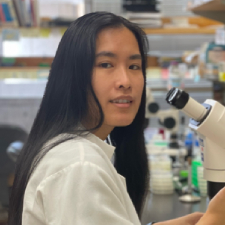
Multiple cancers, including prostate, breast, and gastrointestinal cancers, are known to be heavily innervated. However, the role of neurons and their signaling within the tumor microenvironment remains unknown. Previous work has shown that transecting the vagus nerve can block the progression of gastric cancer, emphasizing a critical role for the vagal neurons in this disease. However, these transections produce side effects, making it a difficult strategy to translate to the clinic. Dr. Wong [Kenneth G. and Elaine A. Langone Fellow] is proposing a new method to non-invasively silence neurons within the body. Specifically, she will use ultrasound to silence specific neurons in rodent models in order to determine the impact of these neurons on animal behavior and disease physiology, including the tumor microenvironment. Dr. Wong received her PhD from the University of Texas Southwestern Medical Center and her BS from St. Mary’s University.
Genome rearrangements have been widely observed in human cancers. Recent whole-genome sequencing data has identified chromothripsis, an event that introduces massive genome rearrangements in only one or a few chromosomes through catastrophic shattering and random reattachment, as one of the most frequent genome rearrangements. Chromothripsis has been associated with poor clinical outcomes in multiple cancers, but the shattering mechanisms that induce chromosome fragmentation remain uncharacterized. Dr. Wu [Marion Abbe Fellow] aims to determine the role of cytoplasmic nucleases (enzymes that cleave DNA) in chromosome shattering and genome rearrangement, which will contribute to our understanding of chromothripsis in all cancers. She will extend this project to a mouse model of glioma to determine the effects of candidate nucleases on cancer progression. Dr. Wu received her PhD and BS from Peking University, Beijing.
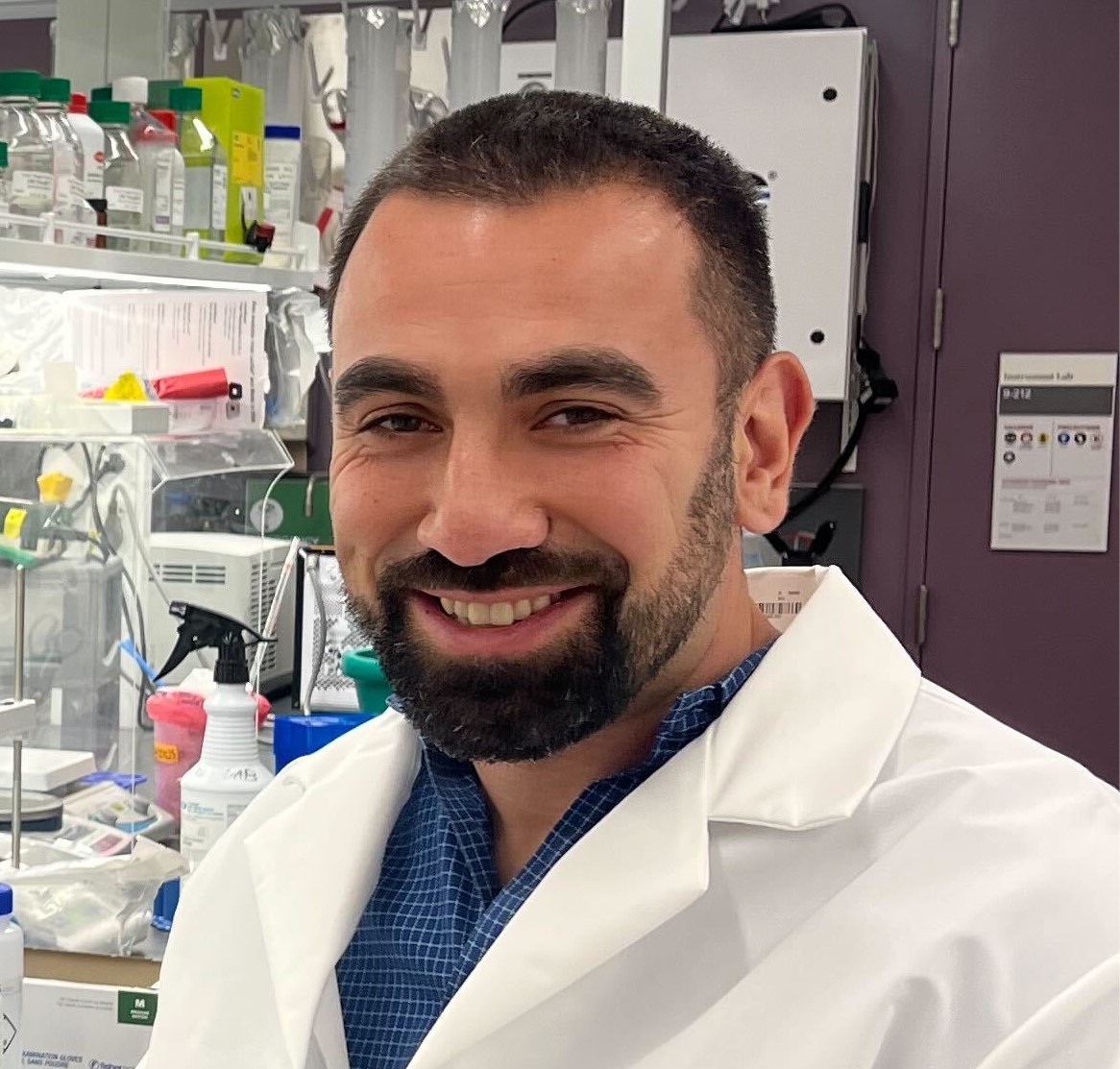
CAR T cells, or genetically engineered immune cells, have transformed the treatment of cancer in recent years, achieving cures for many patients who previously faced terminal diagnoses. Despite the remarkable impact that CARs have had on patients and families, however, fewer than 5% of cancer patients currently benefit from these therapies. A major barrier to broader CAR applications lies in the identification of tumor-specific targets: only ~0.00000001% of the cell surface distinguishes tumor cells from healthy cells. To date, CARs have targeted molecules on the surface of tumor cells, but the majority of tumor-specific molecules reside within the cell, where they are inaccessible to conventional CARs. Dr. Yarmarkovich’s [Bakewell Foundation-Rachleff Innovator] team has pioneered a new class of CAR T cells that are able to target key drivers of cancer. These CARs completely eradicate aggressive tumors in preclinical testing and are entering the clinic in 2025. Encouraged by this success, he has proposed three new strategies to comprehensively map the landscape of subtle molecular differences that distinguish tumor cells from healthy cells. He will map the “known unknowns” using cutting-edge technologies for characterizing the surface of tumor cells, as well as the “unknown unknowns” by harnessing the immune system’s intrinsic capacity for identifying foreign targets. The goal of this study is to significantly expand the landscape of actionable immunotherapy targets, paving the way for curative therapies that benefit a much larger population of cancer patients.







